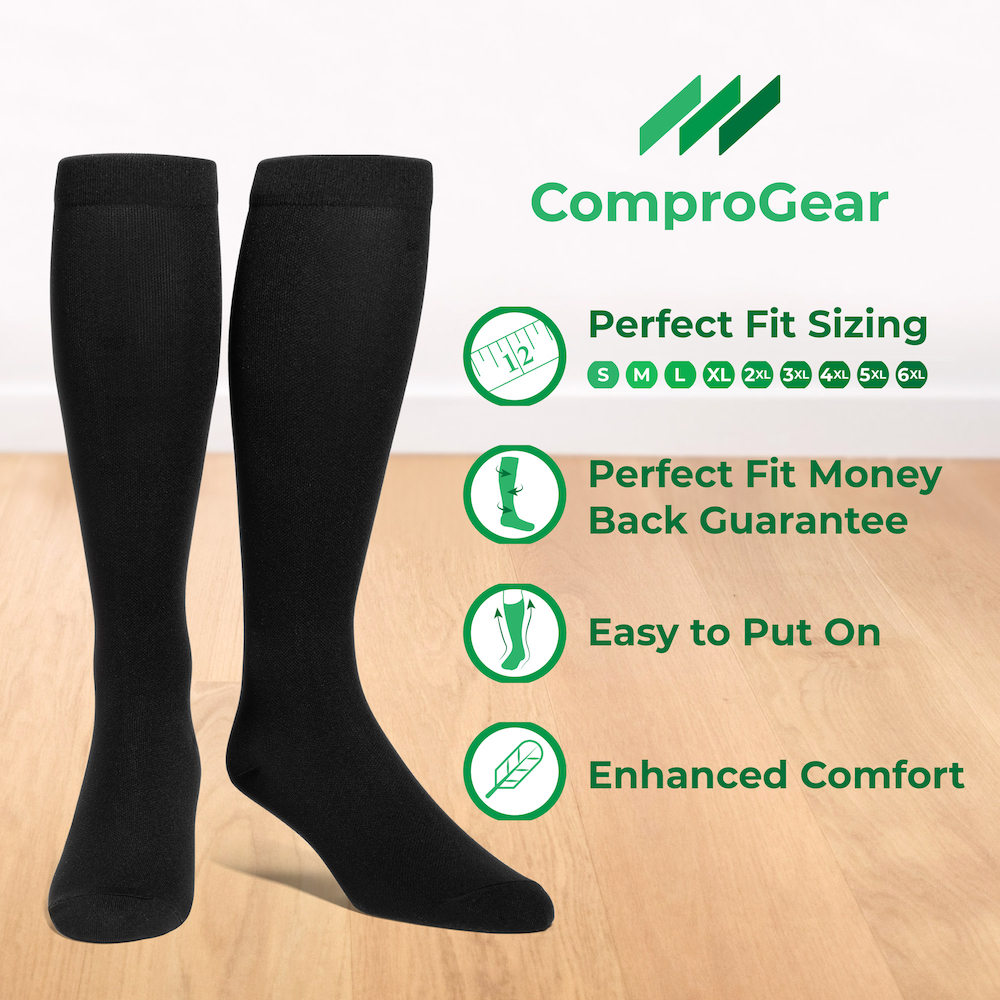Looking for wide socks for sale to help energize your tired legs? Or do you need them to deal with varicose veins and swelling? Perhaps you need them while you recover from surgery?
Whatever your reason, ComproGear has you covered with a wide selection of compression socks to fit your leg and your needs at a good price.
Why Trust ComproGear’s Socks
Here at ComproGear, we know what it is like to shop for compression socks only to be disappointed by the low-quality options available for sale. Most brands are just junk. That’s why we went into business in the first place.
We know that compression socks are not just a piece of spandex fabric hosiery. They are an important piece of medical equipment that will help you achieve your health goals. Because of that, you don’t want to buy just any old compression sock available on sale.
In fact, there are many companies out there selling compression gear that not only won’t improve your health, but in fact may worsen it. Or, junk for sale that will wear out within a few weeks with bad customer service – no returns policy or money-back guarantee. You’ll be back on the market looking for new socks before you even see results.
We knew the world was in need of a high-quality compression sock for sale that would leave people healthier, not worse off.
And we are very confident in the compression gear we made to solve that problem! In fact, in every sale – we are so confident that we offer a 100% money-back guarantee on all of our socks.
So, if you want leg pain relief that will last, look no further! Comprogear’s wide calf compression socks for sale are the real deal. New arrivals are solids color in plus size including Small, Medium, Large, XL, 2XL, 3XL, 4XL, 5XL, and 6XL.
Wide Calf Compression Socks vs. Regular Compression Socks
Many people wear compression socks for many different reasons. Some people wear them because their job requires them to sit for long periods of time or to stand for long periods of time. Others wear them because of pregnancy or a medical condition including surgical recovery. Still others wear them to improve workout performance and recovery time. There are even people who wear compression socks to reduce gout flare ups.
It’s important that your compression socks fit correctly, but this can be challenging if you have wide calves! A sock that is otherwise perfect for your shoes may be too tight and cut off circulation instead of improving it. Or, you may go up a size to compensate and find that the sock is loose around the foot and ankle.
Men’s
Women’s
Nurse
Maternity
Gift Options
Recycled Cotton
Goes well with Jewelry
Includes Embroidery
Goes well with Trouser or Pants
High Review / Customer Love
Tie Dye Color
That’s Purchaseable with Gift Cards
Toe Opening
Pride Colors
Peach Colors
Coral Colors
Ombre Colors
You Can Dye The Socks
Sort By Size
New Arrivals
Sort By High To Low Price
Sort by Low To High Price
Petite Size
Fast Ship
Perfect for Summer
If this is the case for you, then you may want to consider wide-calf compression socks. Runners often wear them because they tend to have very muscular calves. Other people wear compression socks to improve severe swelling, which may make traditional compression socks difficult to work with at first. In this case, it may be best to start with a wider sock and then move to a regular compression sock as the therapy lessens the swelling.
Whether these socks are a permanent solution or a first step in your compression therapy regimen, make sure your socks are tight but not uncomfortable. This is a sign that they fit correctly.
Men’s Vs. Women’s Socks
Compression socks are not one-size-fits-all. In fact, if you see any compression gear for sale that were advertised as such run the other way!
Compression socks work by applying pressure to the legs, ankles, and feet, which improves circulation. This prevents blood from pooling in the feet and lowers your chances of blood clots. It also delivers more oxygen to tired muscles to prevent pain and swelling.
Of course, too much pressure can cut off circulation and too little can be ineffective. This is why it is important to make sure that you get socks that are the correct size and shape.
There are so many sizes, all the way up to compression socks for obese legs.
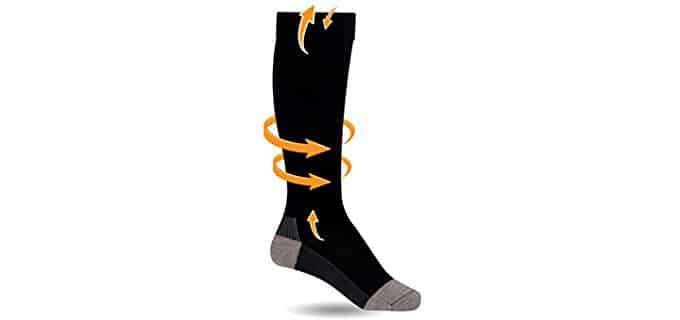
It is also why these socks for sale come in both men’s and women’s sizes. In general, men’s and women are shaped differently, so the corresponding socks are shaped differently. A woman who offers to buy a man’s sock may find that it doesn’t deliver pain relief as expected, and a man who buys a woman’s sock may find that he can’t even get it on.
Just as pants and shoes are sized differently for men and women, so are compression socks. The best way to get a sock that fits you, however, is to accurately size yourself. Both men’s and women’s socks for sale will include size charts so you can make sure you are getting the best fit to help you feel better more quickly. You can also reach out to the customer service team should you need assistance.
Sizing Guide
All quality compression sock companies will include size charts on their website or Amazon page. Just like with your shoes, make sure to pay attention to these charts so you get the right size the first time. Also, check the number of orders and make sure to read reviews so you know if the socks do indeed run true to size.
How to Measure for Compression Socks
In order to use the size chart, however, you need to measure your sock size correctly! Unlike regular socks, however, you need more information than just the size of your shoes.
To do this, you will need a tape measure, a chair, and a friend.
- Ankle Size: Take the tape measure and wrap it around the narrowest part of your ankle. Then, write down the size in both centimeters and inches.
- Calf Size: Find the widest part of your calf and wrap the tape measure around it. Don’t flex. Then, record the measurement.
- Knee Height: This is where having a friend can help. Sit in a chair so that your thigh is parallel to the ground and your feet are flat on the floor. Make sure your knee is bent at a 90 degree angle and that your calves are perpendicular to the floor. Then, have your friend measure the length from the floor to the bottom of your knee cap.
Note that if you are getting thigh-high socks or pantyhose-style compression gear, you may also need to measure the circumference of the widest part of your thigh and your hip circumference. This is not an invasion of privacy – but then again, it may help to have a friend to assist you with this!
Make sure to get a sock that meets all of your sizes. Compromising on any measurements may make your compression gear ineffective or even dangerous. This is why getting these socks is a better idea than just getting the next size up.
Other Things to Look for in Plus Size Compression Socks
After you know your size, you need to look at a few other things before purchasing your compression garments.
Compression Socks Pressure Ratings
What level of compression socks do I need?
Compression socks have pressure ratings, which are measured in millimeters of mercury, mmhg (just like a barometer). These tell you how tight the sock will be.
In general, lower compression numbers are for more minor pains, while higher compression numbers are for more serious illnesses.
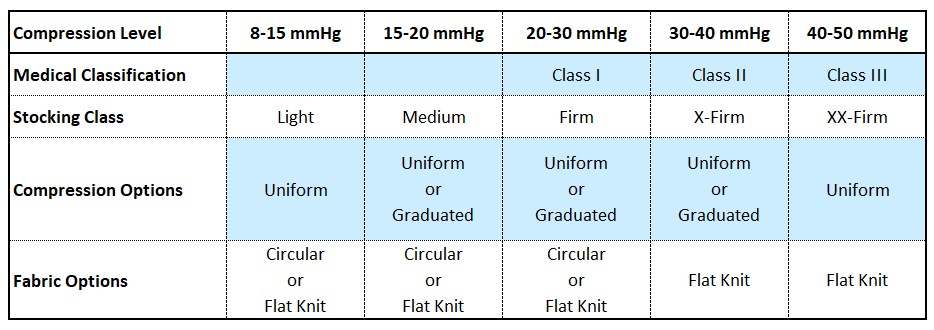
- 8-15 mmhg: Mild compression is for otherwise healthy people who have to stand for long periods of time, travel long distances, or are at risk of developing varicose veins due to pregnancy. This compression level is for prevention and minor pain relief.
- 15-20 mmhg: Medium compression offers benefits that can help prevent varicose veins and is used to treat more moderate leg pain. It is also popular among athletes who claim it helps their legs feel more energized and helps with post-workout recovery times. People who stand all day or sit all day for work may likewise benefit from 15-20 mmhg compression level.
- 20-30 mmHg: Firm compression gear is for treating existing problems such as spider veins, varicose veins, edema, and ulcers. It is great for people at risk of DVT, especially those recovering from surgery.
- 30+ mmhg: Extra firm compression are for people with very serious circulation issues, and this level of compression typically requires a prescription. It is particularly helpful in preventing DVT, varicose veins, and edema in post-surgical patients and bedridden patients, especially those with existing conditions.
Getting compression that is too mild may not help with symptoms, but compression gear that is too strong may also cause problems. Do not only rely on socks for high sale reviews, but also talk with your doctor about why you want to wear compression socks, and he or she can recommend the proper pressure level for you.
Fabric Types
Compression socks are available in many different types of fabric to fit different needs. When picking a fabric type, you should consider the climate, the reason for wearing socks, and personal preference.
- Cotton: Cotton can be very comfortable and is great for people who are recovering from surgery. Many of them for sale are made of a blend of cotton and other materials.
- Synthetic: Synthetic ones for sale are made in a lab but have lots of great qualities. Some are spandex – they tend to stretch well but also return to their original shape. They also have antimicrobial properties that wick away sweat and bacteria to keep your legs free from infections. The Synthetic fabric also tends
- to be very durable.
- Nylon: Nylon is very soft and tends to dry quickly so that your feet don’t feel sweaty. It is one of the most popular types of synthetic fabric.
- Sheer: The Sheer fabric is very thin, which makes them great for hot weather. They can also be worn under regular ones, but make a great fashion statement when worn on their own. Unfortunately, however, these are usually only available for sale at lower pressure levels.
Most compression socks are optimized by using a mix of these materials to provide comfort, durability, and stretch.
Length
Compression socks come in several lengths.
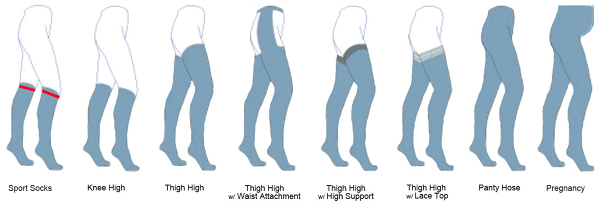
- Ankle-high: Ankle-high compression socks, as the name implies, only cover the foot and ankle. They are great if you have pain or swelling localized to the foot, but most people need a compression sock that goes a little higher.
- Knee-high: Knee-high compression garments rise to the knee but don’t go over them. They reduce swelling and pain in the foot, ankle, and calf. They are also the most popular type of compression sock because these are the places where most people have problems. As a bonus, pair these with your favourite shoes because the knee-high length are very fashionable!
- Thigh-high: People with more severe problems might benefit from thigh-high compression socks, which rise to mid-thigh. This is especially helpful if the leg pain and swelling rises above the knee.
- Pantyhose-style: These compression garments go on like a waist level pair of tight pants or stockings. They provide the most pain relief for people with severe edema, ulcers, and varicose veins.
Style
When many people think of compression socks and related gear, they think of frumpy, beige socks with weird patterns that their grandmas used to wear.
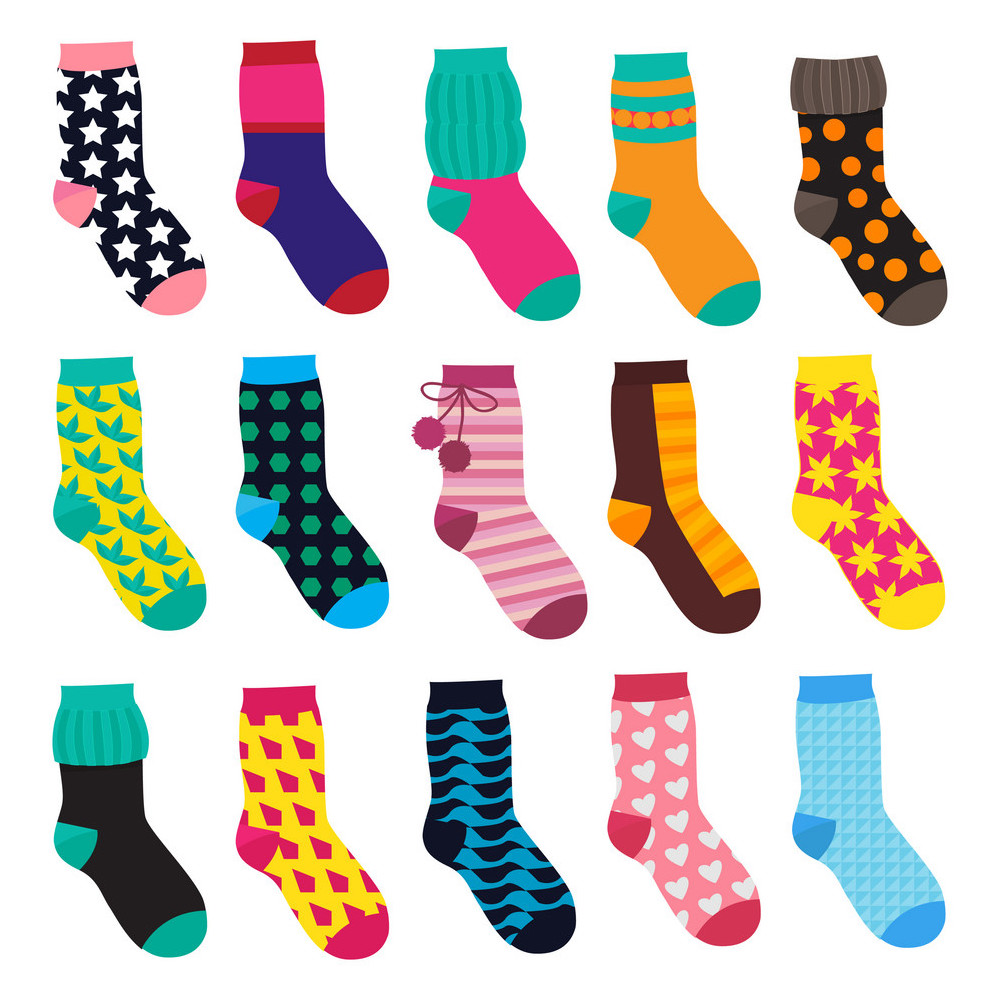
Well, there is good news! Whether you are a college athlete or a great-grandmother, there’s no need to wear ugly compression socks. There are so many styles and colors available that will compliment any shoes – there is sure to be something for everyone. You can even get multiple pairs in different colors to go with different outfits. You can also get muted ones if you don’t want them to stand out.
The bottom line is, though, that there are tons of fabric with cute styles. No one will even realize that they are anything other than a fashion statement.
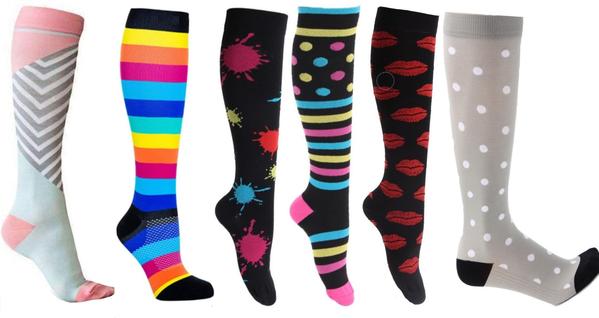
Where Can I Buy These Socks
If you can buy food, pets, cars, real estate, and appliances online, you can also buy compression socks online. Yes, some pharmacies do carry them, but they tend to have a limited selection.
Online, you can buy pairs that fit well, are comfortable, and look amazing…
Benefits of Wearing These Socks
These socks offer a wide range of benefits.
First of all, wearing a sock that fits well can provide immediate pain relief for tired, achy legs. If you stand all day or sit all day for your job, you will notice the difference immediately.
Medical reviews have shown that medical compression socks can also help treat common circulation issues including edema (swelling), varicose veins, and spider veins. Your legs will look and feel better after just one day of wearing compression gear.

They can also help prevent diseases. If you don’t have ulcers, varicose veins, DVT, or edema, consider yourself lucky. You should also consider investing in a quality pair of compression socks to keep it that way!
Compression socks can also help athletes improve their performance by making legs feel energized and limiting recovery time. Since many athletes have muscular legs, they especially tend to enjoy wide these.
Where body navigation is sometimes difficult, especially if you have wide calves due to swelling, body shape, or muscles, these socks can help with pain and prevent future illness. Note, however, that if this is due to swelling, you may need to get a smaller pair as your swelling decreases.

Tips for Putting on these Socks
People often complain to customer service that compression socks are “too tight” or “too difficult to put on” and assume that they bought the wrong size.
On the contrary, however, if you find it easy to put on your compression socks, you probably got the wrong size.
Compression socks should be snug but not painful. Putting them on should require some work but not be overwhelmingly difficult.
To put them on correctly (and thus ensure you are getting the most out of them), start by bunching up your socks to the toes. Then, put your toes in and slowly unbunch the sock as you bring it up your leg. When the sock is completely unrolled, smooth out any wrinkles and ensure that it is on straight. Then, do the same with the other leg.
If you are wearing compression socks because you have limited mobility, it is probably best to have someone else help you with easier navigation or ask the customer service team for further instructions.
How to Wash and Take Care of Your Wide Calf Compression Socks
Taking proper care of your wide calf compression socks will ensure that they are effective for years to come.
First, make sure that you take your compression socks off at night. Unless your doctor strictly orders you to wear them at night, you should not wear compression socks while lying down. This is because your legs tend to relax at night, and you should give them a break from compression therapy at least once per day.
Since compression socks lie close to the skin, they will get sweaty. To keep dirt and bacteria at bay, you should wash them frequently.
Beware, however, as throwing your compression socks in the washer and dryer can cause their compression to become uneven, cause them to lose their shape, or cause them to shrink.
Your best bet is to wash them by hand in cold water with a mild detergent. Then, wring them out and lay them out to dry. If you absolutely must put them in a washing machine, put the machine on delicate and put the socks in garments back. Never, ever, put the socks in a dryer though.
Since it will usually take a day or so for the socks to dry, make sure you have at least two or three pairs on hand so that you have something to wear while the first pair dries.
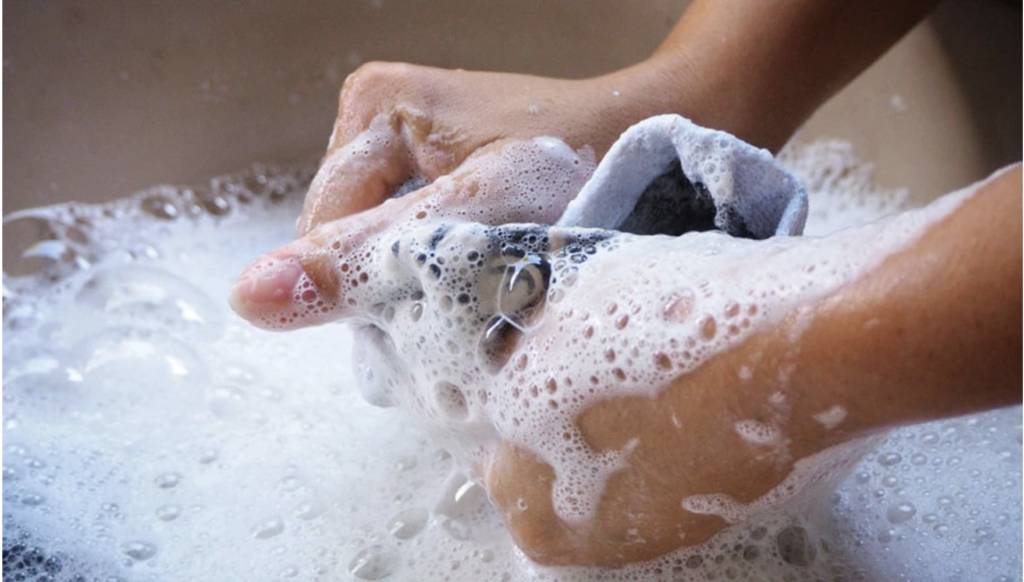

Conclusion
These socks are great for people who have wider calves due to swelling, muscles, or build. They can ensure that you get the proper compression you need to ward off pain, swelling, and circulatory disease no matter your body shape.
Make sure to check out ComproGear’s wide range of stylish, high quality wide calf compression socks and stockings for sale that are perfect for people of all shapes and sizes.
This page last updated March 27, 2023
